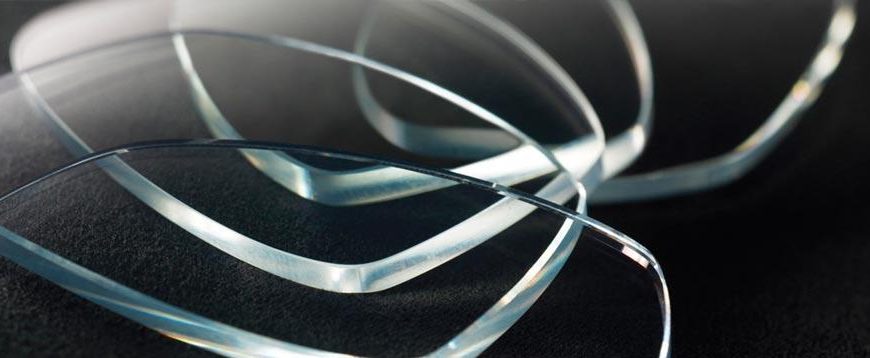Eyeglass lenses come in a variety of materials, each with its own unique properties and benefits. Understanding the different lens materials can help you make an informed decision about which type of lenses are best for your needs. This article will take a closer look at some of the most common lens materials.

Glass lenses are lenses made of glass, which is a material that has been used to make lenses for eyeglasses for centuries. Glass lenses are known for providing clear vision, as they have a higher refractive index than plastic lenses, which means they bend light more effectively. This makes glass lenses ideal for people with high prescriptions, as they provide a clearer image compared to plastic lenses. Additionally, glass lenses are scratch-resistant, which can help keep your lenses looking clear and scratch-free over time.
However, glass lenses have several disadvantages. Glass lenses are heavy, fragile, and not as impact-resistant as plastic lenses, which makes them more likely to break or crack if you drop your glasses or expose them to rough conditions. They also have a higher risk of shattering into sharp pieces if they break, which can be dangerous. Additionally, glass lenses are not as versatile as plastic lenses, as they are not suitable for certain types of lens coatings, such as anti-reflective coatings, that can be applied to plastic lenses.
Plastic lenses, also known as CR-39 lenses, are lenses made from a type of plastic material. They are a popular choice for eyeglasses because they are lightweight, making them more comfortable to wear for long periods of time, and impact-resistant, which means they are less likely to break or crack if you drop your glasses. Plastic lenses are also more versatile than glass lenses, as they can be made in a variety of shapes, colors, and thicknesses, and they can also be treated with a range of lens coatings, such as anti-reflective coatings and scratch-resistant coatings.
But, plastic lenses are not as clear as glass lenses, and they are prone to scratching. Additionally, plastic lenses can turn yellow over time, which can impact their clarity. If you wear your glasses frequently, you may need to replace plastic lenses more often than glass lenses, as they can wear down faster.
Overall, plastic lenses are a good choice for people who want a lightweight, versatile, and impact-resistant lens material for their eyeglasses. They are also a more affordable option compared to other lens materials, such as polycarbonate or high-index lenses.
Polycarbonate lenses are lenses made from a type of plastic material that is known for its strength and durability. Polycarbonate lenses are lighter and more impact-resistant than traditional plastic lenses, which makes them a popular choice for eyeglasses for children and active adults, as well as for safety glasses and sport eyewear. Additionally, polycarbonate lenses are scratch-resistant, which can help keep your lenses looking clear and scratch-free over time.
Polycarbonate lenses also have a higher refractive index than traditional plastic lenses, which means they bend light more effectively and provide clearer vision. They are also thinner and lighter than traditional plastic lenses, which makes them a good choice for people with high prescriptions who want to reduce the thickness and weight of their lenses.
However, polycarbonate lenses are also more expensive than traditional plastic lenses, and they can be prone to scratching, so it's important to be careful with them and clean them regularly. Additionally, polycarbonate lenses may not be as clear as other lens materials, such as high-index lenses or glass lenses.
High-index lenses, also known as hi-index lenses, are lenses made from a type of plastic material that has a higher refractive index than traditional plastic lenses. High-index lenses bend light more effectively, which means they are able to provide clearer vision, especially for people with high prescriptions. This also means that high-index lenses are thinner and lighter than traditional plastic lenses, which can be a significant advantage for people who want to reduce the thickness and weight of their lenses.
High-index lenses are also available in a range of materials, with different refractive indices, so they can be customized to meet individual prescription needs. Additionally, high-index lenses can be treated with a range of lens coatings, such as anti-reflective coatings, to reduce glare and improve vision.
On the other hand, high-index lenses are more expensive than traditional plastic lenses, and they may not be as scratch-resistant as other lens materials, such as polycarbonate or glass lenses. Additionally, high-index lenses may also be more prone to glare and reflections, which can be a drawback for some people.